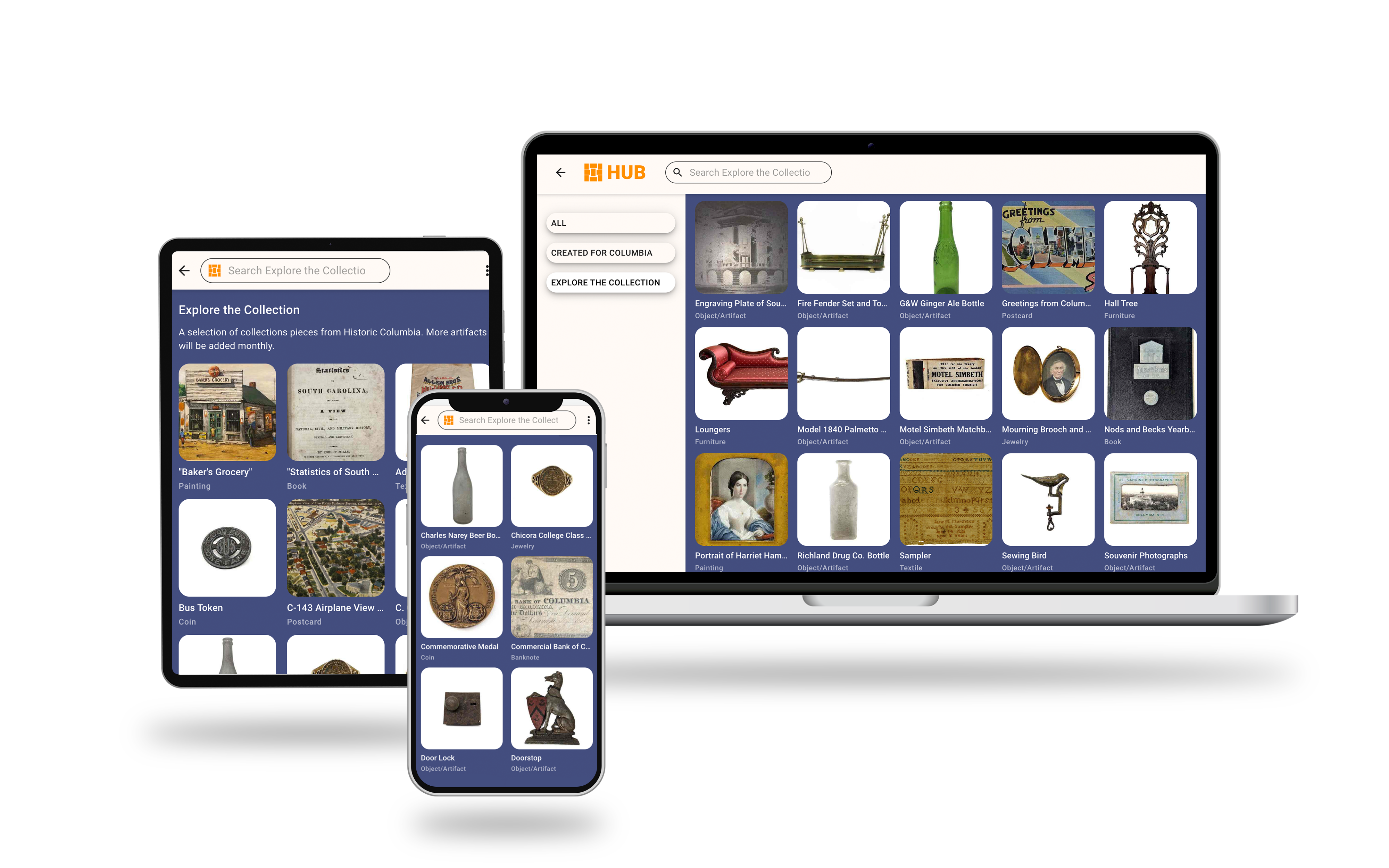Collection
Introducing Historic Columbia's
Online Collection
Historic Columbia is continually striving to make our full object collection digitally available to the public for education and research purposes. New objects and edits to current entries will be published routinely.
About the Collection
Historic Columbia maintains a collection of objects of various mediums and sizes that tell the stories of those who lived and worked in Columbia and Richland County. Of the thousands of objects cared for, preserved, and displayed by Historic Columbia, the collection primarily includes objects reflecting life in 18th- through 20th-century Columbia. Many of the objects have provenance or association with the historic sites operated by Historic Columbia, including direct ties to the Hampton, Preston, Mann, Simons, Wilson, and Simkins families. As part of its stewardship, HC exhibits objects to the public through in-person tours, events, and digital access.
While roughly 65% of our collection is on display, the remaining 35% stays in secure storage. Check back often, as we will add objects to our digital platform every month. Note: We regularly update object records to reflect new research findings.
Explore the Collection
Frequently Asked Questions
- Do you hold copyright to any of the images?
Historic Columbia (HC) does not grant reproduction rights for any object on loan or for which HC is not the copyright holder. When granting permission to reproduce images of objects in the collection, HC warrants and represents that to the best of its knowledge, but without investigation, the rights granted by it will not infringe upon the rights of any third party. However, HC is acting only as an owner of the physical original. HC is not responsible for determining the copyright status of the images or objects, or for securing copyright permission and the payment for any such permission required. The rights granted do not include any rights that persons other than HC may have in the images or work, including any artists’ rights or attribution or control under the laws of any country or state, moral rights, or the rights of publicity or privacy. These terms shall be made explicit to any requester by the Curator of History or the Director of Outreach and Engagement. Requests to reproduce photographs of objects in the collection must be made in writing to the Curator of History.
Requests should include all specifics of the intended use. If permission is granted, the requestor will receive written permission to reproduce and the contract (if required) to reproduce, and the requested photographic materials.
Any fees will be assessed and collected if required by HC prior to photography.
- Can I donate an object to HC?
If you have an object that you believe may benefit the collection at Historic Columbia, please learn more about the donation process and submit an inquiry here.
- What type of objects does HC collect?
Historic Columbia (HC) maintains a collection of objects of various mediums to tell the story of those who lived and worked in Columbia, specifically within one of the properties operated by Historic Columbia (HC). Of the several thousands of objects cared for, preserved, and displayed by Historic Columbia, the collection primarily includes objects reflecting life in 18th - through 20th-century Columbia and Richland County, South Carolina. Many of the objects have provenance or association with the historic sites operated by Historic Columbia, including direct ties to the Hampton, Preston, Mann, Simons, Wilson, and Simkins families.
Of these objects, our collection largely falls within the range of Federal (1790 – 1820) and Classical (1820 – 1840) styles, although the overarching collection encompasses objects of daily life primarily from the antebellum (1800s – 1861), Civil War (1861 – 1865), Reconstruction (1865 – 1877), Gilded Age (1880s-1920s), Depression and Jim Crow (1930s-1950s), and Civil Rights (1930s-1960s) periods. Our objects vary in composition, size, and contributing value to the interpretation of the various sites operated under the auspices of HC. These include furniture, decorative arts, textiles, photographs, and ephemera. Materials include wood, ceramics, glass, paper, cloth, precious metals, and animal products (fur, leather, feathers, ivory, and bone).
We invite you to explore our collection in person and/or digitally to see examples of objects we have accessioned into the collection.
- How can I learn more about an object I saw on a tour or online?
Our tour guides are happy to answer any questions you may have about an object while on your tour. However, if you have a question later, or if you find an object online you would like to know more about, please complete the Object Research Request form.
- Can I loan my object to Historic Columbia?
Historic Columbia (HC) encourages and often requests objects to be loaned for display when appropriate. These loans are renewed on an annual basis. Lenders must keep their contact information accurate with HC in order to receive correspondence regarding their loans. Lenders may request their objects to be returned to them at any point but must give HC at least 30-days' notice. HC does not accept “long-term loans” or “indefinite loans.” Should you wish to contact HC regarding a loan, please contact our staff directly via email.
- Will you tell me when my object is on display or on loan?
Due to the large number of objects within our collection, Historic Columbia is not obligated to inform you on the status of your object once it is formally accessioned into our collection. Should you have an inquiry regarding your object, we encourage you to contact us for more information.
- Will you ever dispose of objects in your collection?
Museums remove objects from their collection through a process called deaccessioning. This practice is required to provide the best possible care for the overall collection and to follow the museum’s mission. The decision to deaccession an object is based on established guidelines and must be approved via vote by the Collections Committee and Historic Columbia’s Board of Trustees. More often than not, objects are deaccessioned due to poor condition or due to changes in interpretation at our sites. Historic Columbia (HC) makes attempts to transfer deaccessioned items to other museums that will be better suited to care for and interpret the object. Should an object that you donated be deaccessioned, HC is not obligated to contact you.
- Can I see where you store the collection?
The objects currently in storage are housed in a secure location. We do not offer public tours of our collections storage but do occasionally offer private tours to raise money for Historic Columbia. Be sure to view our event calendar to stay informed of these opportunities.
- Will you teach me how to take care of my objects?
If you are interested in learning more about one of Historic Columbia's objects, or about how to identify, research, or care for an object in your possession, please complete the Object Research Request form and a member of our staff will be in contact with you. Please do not bring any objects to the museum without first contacting a Historic Columbia staff member.
- Can you conserve my object for me?
Historic Columbia does not have a conservator on staff, nor do we offer this service. We recommend you find a conservator through the American Institute for Conservation.
- Can you appraise my object for me?
It is against federal law for any museum to provide appraisal values for donated objects. Should you wish for an appraisal to be completed for your object, please contact a local appraisal. Should you want to donate an object to Historic Columbia with an appraisal, you are responsible for organizing and completing that appraisal prior to contacting Historic Columbia to donate your object. Should your item be accepted by Historic Columbia, you will receive a deed proving your item was donated, which you can share with your accountant when completing your taxes. We recommend finding an appraisal through the American Society of Appraisers.
- I donated an object. Why isn't it on display?
Historic Columbia cannot display all objects at all times. This is not safe for the objects themselves, nor does that aid in our interpretation. After the donation of an object, we cannot guarantee that the object will be immediately placed on display or will be permanently displayed. We do invite you to view your donated object in our online database.
Example Objects
-
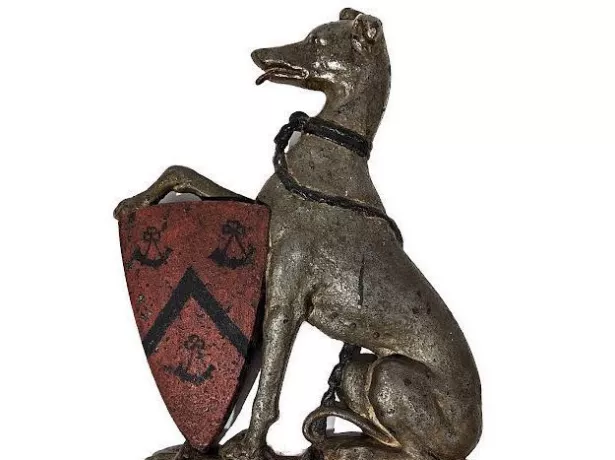
This doorstop, along with other objects with unknown connections to Columbia, was purchased from an early supporter of Historic Columbia. When displayed together during the 1960s, these objects ensured that the Robert Mills House resembled a home lived in by an upper-class, 19th-century family.
-
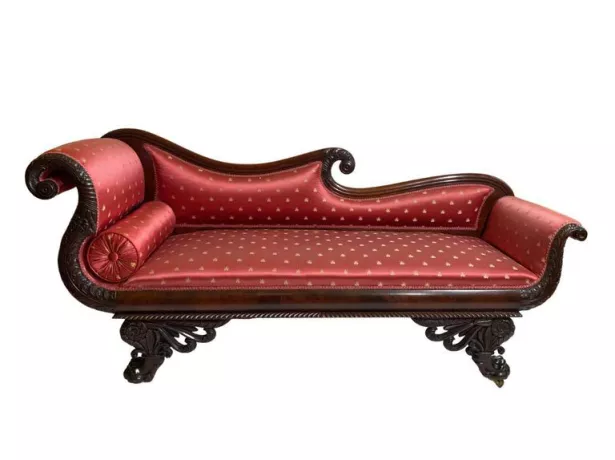
Chaise recamier sofas like this would have been used in upper-class households in the 1800s. Although they existed in various forms for centuries, loungers were helpful to sitters, primarily women, in the Victorian Era, as they provided support through their high-curved arm.
-
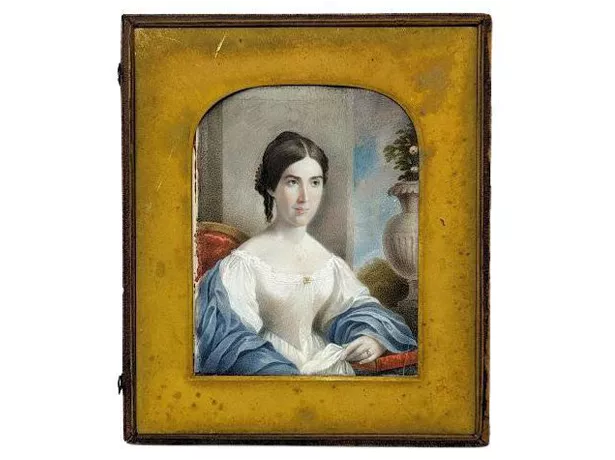
Harriet Flud Hampton (1823-1848) was the oldest daughter of Wade Hampton II (1791-1858) and Ann Fitzsimmons (1794-1833). This portrait was preserved and passed down through several generations of the Hampton family until it was bequeathed to the Historic Columbia Foundation.
-
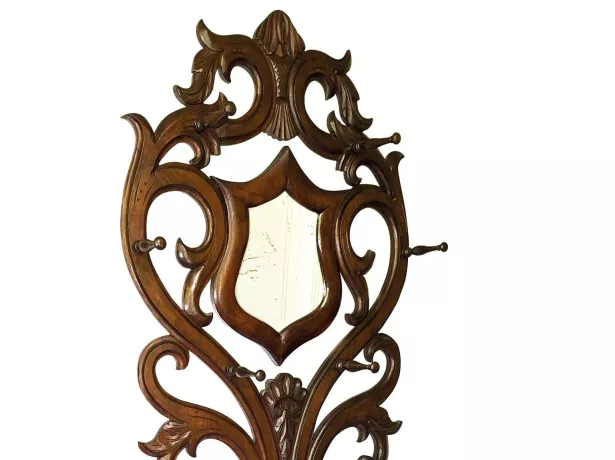
Hall trees, like this one believed to have been owned by the family of Woodrow Wilson, were used during the Victorian era to hang coats. As the front hall acted as the introduction to one's home, ornate hall trees served as a display of wealth and signaled one’s ability to purchase luxury goods.
-
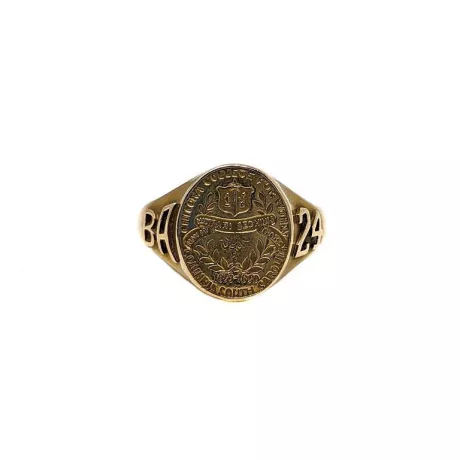
This class ring was worn by a student at Chicora College. Originally located in Greenville, Chicora merged with the College for Women in Columbia at the former home of the Hampton-Preston family. The college remained there for almost 15 years before it merged with Queens College in Charlotte.
-
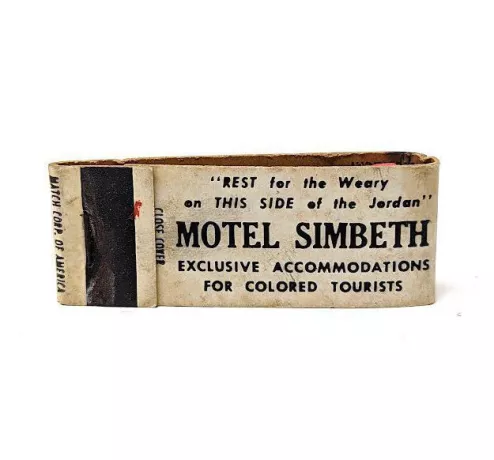
In operation almost a decade, Motel Simbeth provided lodging for Black travelers in an era of segregation and racial intimidation. Co-owned by civil rights leader Modjeska Monteith Simkins (1899-1992), it was listed in the "Negro Motorists Green Book" as a safe location for travelers.
